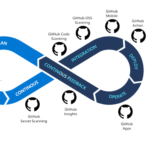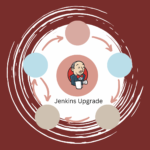Introduction to Problem Solving: The Foundation of Engineering Excellence
Problem solving is at the heart of every engineering breakthrough. Whether you’re troubleshooting a software bug, designing a new product, or optimizing a workflow, the ability to systematically define, analyze, and resolve challenges is what separates good engineers from great ones. In essence, problem solving is the process of identifying an issue, uncovering its root cause, evaluating possible solutions, implementing the best one, and ensuring the results are sustained over time.
For engineers, this process is not just about fixing what’s broken—it’s about driving innovation, improving quality, and delivering value. The problems faced can range from highly visible system failures to subtle inefficiencies that erode productivity. Effective problem solving requires a blend of critical thinking, creativity, data analysis, and collaboration.
The typical steps include:
- Defining the Problem: Clearly state what is wrong, separating facts from opinions and focusing on underlying causes, not just symptoms. Learn more
- Gathering Information: Collect data, observe processes, and consult with subject matter experts to understand the full context.
- Brainstorming Solutions: Encourage creative thinking and list all possible solutions, considering both conventional and out-of-the-box ideas.
- Evaluating and Selecting Solutions: Compare alternatives against criteria and constraints, then choose the most effective and feasible option.
- Implementing the Solution: Develop a detailed plan, assign responsibilities, and execute the chosen solution.
- Testing and Assessing: Monitor results, gather feedback, and make adjustments as needed to ensure the problem is resolved and doesn’t recur.
In the modern engineering landscape, these steps are often supported by digital tools, collaborative frameworks, and—more recently—AI-powered analytics. Mastering problem solving is not just about following a checklist; it’s about cultivating a mindset of curiosity, resilience, and continuous improvement.
“Problem solving is the act of defining the problem, diagnosing the problem’s root cause, identifying and implementing a solution, and sustaining results.” [ASQ]
Engineering Problem-Solving Toolkit
This appendix provides a comprehensive suite of practical resources, templates, and references designed to help engineers and engineering managers implement the frameworks and strategies discussed throughout this ebook. All resources are structured for immediate use and customization, supporting both individual contributors and leaders in modern engineering organizations.
A. Science and Engineering Practices Reference
- Asking Questions and Defining Problems: Initiate projects by clarifying objectives and constraints. How to Define a Problem in Engineering
- Developing and Using Models: Create diagrams, simulations, or prototypes to visualize and test ideas. Engineering Design Process Handout (PDF)
- Planning and Carrying Out Investigations: Design experiments or tests to gather data and validate hypotheses.
- Analyzing and Interpreting Data: Use statistical and computational tools to extract insights from results.
- Using Mathematics and Computational Thinking: Apply quantitative reasoning and modeling to solve problems.
- Constructing Explanations and Designing Solutions: Develop and communicate evidence-based solutions.
- Engaging in Argument from Evidence: Facilitate technical debates and justify decisions with data.
- Obtaining, Evaluating, and Communicating Information: Document, share, and review findings and solutions.
B. Engineering Design Process Guide
- Identify the Problem: Clearly articulate the issue, considering user needs and business context. See process details
- Analyze the Problem: Define constraints, requirements, and stakeholders. Step-by-step guide (PDF)
- Research and Gather Information: Review existing solutions, literature, and data.
- Brainstorm Alternative Solutions: Encourage diverse ideas and approaches.
- Model the Best Solution: Use CAD, flowcharts, or code prototypes.
- Test and Evaluate: Conduct experiments, simulations, or code reviews.
- Refine and Retest: Iterate based on feedback and results.
- Communicate Final Design: Prepare presentations, reports, or demos for stakeholders.
C. Actionable Templates and Checklists
-
Root Cause Analysis Templates
- 5 Whys Worksheet: Problem Statement, Why 1–5, Root Cause Identified. Download template & example
- Fishbone (Ishikawa) Diagram: Categories: People, Process, Equipment, Materials, Environment, Management. See Fishbone examples
-
Incident Review Template
- Incident Description, Impact Assessment, Timeline, RCA, Actions, Lessons Learned. Download Post-Incident Review Template (PDF)
-
Engineering Project Checklist
- Overview, Stakeholders, Documentation, Quality, Safety, Testing, Communication, Lessons Learned. Free Engineering Checklist Templates
-
Process Mapping Worksheet
- Process Name, Steps, Inputs/Outputs, Bottlenecks, Automation Opportunities. Simple Process Map (Excel)
-
AI Integration Readiness Checklist
- Data, Infrastructure, Security, Skills, Use Cases, Metrics. AI Readiness Checklist & Guide
D. Technical Documentation Aids
- Design Proposal Template: Executive Summary, Objectives, Requirements, Concepts, Design, Testing, Risks, Roadmap, Appendices. Project Management Documents Appendix
- Change Request and Quality Report Forms: Change Description, Rationale, Impact, Approvals, Audit Checklist, Nonconformance Report.
- Code Review Checklist: Readability, Security, Tests, Docs, Performance, Comments. Sample Engineering Checklists
E. Data, Calculations, and Program Listings
- Worked examples for key engineering formulas or simulations. Engineering Example Problems (PDF)
- Extended datasets used in analysis.
- Code snippets or scripts for modeling and automation.
F. Leadership and Team Management Tools
- RAACI Chart Template: Task/Decision, Roles, Review Date. Role Assignment Templates
- Team Health Survey: Communication, Psychological Safety, Role Clarity, Workload, Suggestions.
Conclusion: Equip Your Team for Engineering Success
A well-designed appendix and toolkit are more than just add-ons—they are the foundation for high-performing, resilient engineering teams. By adopting these resources, you empower your organization to solve problems faster, learn continuously, and stay ahead in a rapidly changing world.
Ready to take the next step? Contact us today to access the full toolkit, get expert guidance, or discuss custom solutions for your team.
G. Further Reading and Digital Resources
- ASQ: What is Problem Solving?
- 7 Powerful Problem-Solving Root Cause Analysis Tools
- Essential Engineering Toolkit: Software, Apps, and More
- Appendix A: Project Management Documents
- Problem-solving skills utilized by graduating engineers (Pepperdine University)
- Contact StoneTusker for Engineering Solutions



